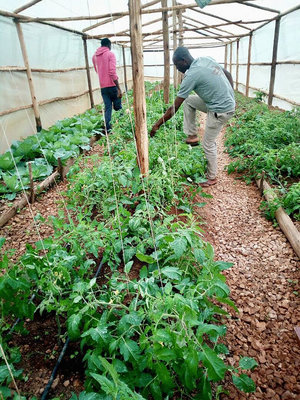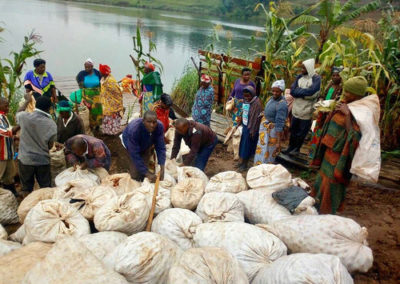Entusi Model Farm
Overview
The Entusi Model Farm, located in the Lake Bunyonyi area of Southwestern Uganda, serves as an outdoor, hands-on classroom for local farmers to learn new farming techniques and practices. It is supported by the Global Livingston Institute (GLI), a non-profit organization whose goal is to educate students and community leaders on innovative approaches to international development and empower awareness, collaboration, conversations and personal growth. GLI has tasked this team with developing a design for an irrigation system for the model farm that combats the unreliable rain patterns of the area, providing a sustainable source of water for agriculture. The design consists of a low cost, low-maintenance irrigation system that can be easily reproduced by the farmers who visit the Entusi model farm and flexible to different plot sizes. If possible, GLI would like a solution that also creates incentive and appeal for more people to visit the farm. GLI has been the middle-man in communications between the team, the Entusi staff and Ugandan farming community.
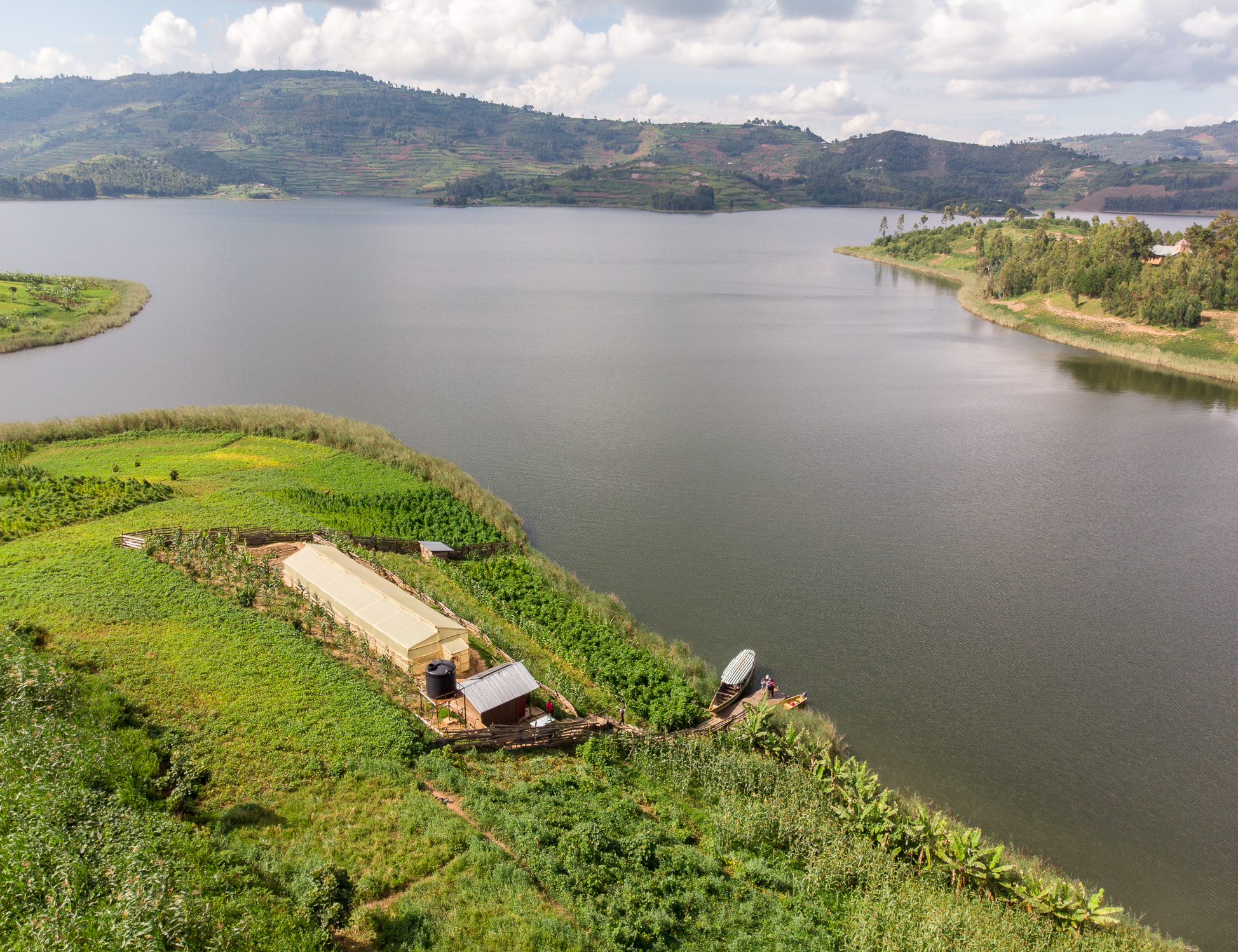
Aerial view of the Entusi Model Farm on Lake Bunyonyi in Uganda
Entusi Resort & Retreat Center near Kabale, Uganda
Team Members
- Carlos Diaz
- Emily Jones
- Jacob Kohl
- Elena Lundeen
- Anli Ni
- Brenna Treanor
The Client
- Global Livingston Institute
Acknowledgements
We would like to thank Tom Karrel, Raymond Bokua, Thomas Byonanebye, Nathan Davis, Anit Koirala, Kristoph Kinzli, Reza Hedayat, Beth Reddy, Alina Handorean, Global Livingston Institute, our donors, and the senior design advisors and teams for their continued support. Our project would not have been possible without their guidance and help along the way.
Video
Elevator Pitch

Farmers planting seeds on the Entusi Model Farm
The purpose of this project is to work with the Global Livingston Institute to develop irrigation and erosion solutions for the Entusi Model Farm near Lake Bunyonyi, Uganda. The solutions must not only work for the Entusi Farm; they should be easily reproduced on varied scales for neighboring farms in the region. Our team proposed four design solutions: check dams, semipermeable clay pots, a partnership with Volta Irrigation, and rainwater collection from roofs.
The check dams are the most feasible, cost-effective and safe solution to mitigating the erosion and irrigation problems on the farm. Check dams can be made of any local source material: stones, wood, concrete, or any recycled materials. These small dams store runoff from storms for a short period of time, increase infiltration, and redirect water towards crops. Additionally, check dams collect sediment that would otherwise be washed away, allowing farmers to collect this nutrient-rich soil and redistribute it to their crops.
The other three solutions (Volta irrigation, clay pots, and rooftop rainwater collection) are good alternatives for farmers that may not have the resources or manpower to create check dams.
Design Approach

Design Approach for the Entusi Model Farm Irrigation System
As part of the Engineering for Communities Design Studio the team emphasized the importance of satisfying the Bridger and Luloff criteria for sustainable community development in their design. These criteria focus on factors such as desirability, feasibility, and viability that are essential to consider in order to fully meet the needs of a community. Through conversations with GLI staff, the team developed a set of design criteria which was used to guide the design process. GLI also had conducted surveys from members of the farmer cooperative at Entusi and the feedback from the responses was also considered throughout the design process.
Project design constraints include:
– Plot sizes of farms are 20 x 30 meters
– Cost to implement design per farmer: $15-$50 (per client request)
Project design criteria include:
– Robust and easily replicable
– Sustainable–farmers can maintain system on their own
– Meets water delivery needs for current crops
Initially, four concepts were considered in the preliminary design process: a system of check dams, a roof rainwater collection system, clay pots, and Volta irrigation. In deciding on a design, our team considered the design constraints and criteria provided by GLI. An assessment of how each design solution addressed these criteria is shown in Table 1. Each criteria was ranked on a score from 1-10, with 1 being the worst and 10 being the best. For example, under the Cost criteria, a lower score indicates a more expensive solution.
Table 1: Design matrix utilized to determine main irrigation concept

This analysis and decision to move forward with the check dam system design was approved by the client. This became the focus for the project with the hopes that future teams might also consider the other three design alternatives.
The validation process for the check dam system included researching case studies that had implemented similar check dam systems, reviewing calculations with our faculty advisor, and conducting extensive research on typical building regulations and guidelines for check dams. Case studies in Bamyan, Afghanistan and in the Sikar District, India showed an increase in irrigated farmland and subsequently, increased income after the implementation of check dams. There were also documented environmental benefits including flood mitigation and groundwater recharging.
Design Solution
The team designed a system of check dams to store and distribute water throughout a given plot. The main goals of the check dams are to collect and store water and provide farmers with access to water for irrigation purposes. The system is designed to be adjustable for different sized plots, varying water requirements for different crops, and compatible with the addition of more robust irrigation methods for the future.
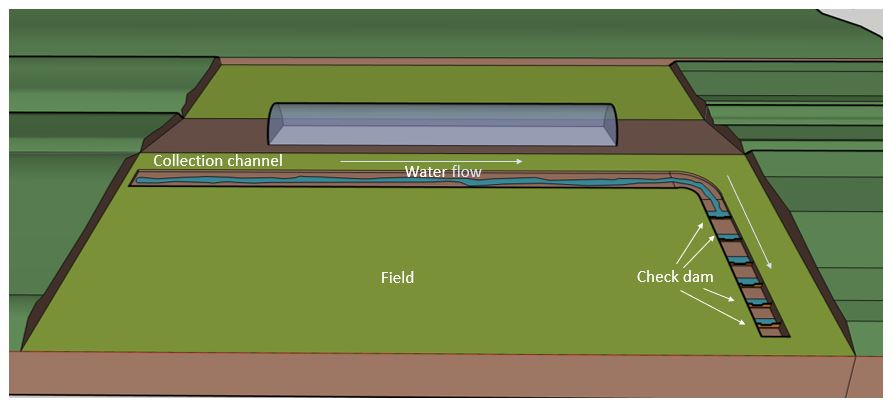
Rendering of the channel and check dam system on the Entusi Model Farm, created by the team
Above is a rendering of the check dam system on the Entusi Model Farm site depicting the various components and showing the flow of water throughout the system. The check dams are able to be constructed from a mix of rock, soil, timber, and cement. In order to minimize risk, a maximum depth for each check dam was established to be 0.6 m (2 ft). Other risks such as mosquito growth in stagnant water and the coffee rust fungus were considered but our client informed us that they were not concerns in this region. For additional information about risk mitigation, reference the detailed risk analysis matrix attached to this website. The figure below also shows the dimensions for each individual check dam that would be installed on the ¼ acre plot. The sizing and layout of the check dam system are able to be altered to fit farm plots of various sizes, shapes, and slopes.

Drawing of the check dam structure, spacing, and calculations for the number of dams needed
Farmer relations are extremely important since the design will be on a model farm for learning the best techniques. A pamphlet, shown below, was created to communicate to the farmers what a check dam system is, how it will benefit their farms, and how they can implement it on their farms. The pamphlet allows for quick communication of the design and initial feedback. Further testing with farmer feedback is necessary until the pamphlet can be finalized. The Swahili translations should be verified by a native speaker before publication. Additionally, rendering and drawings may be modified to more accurately fit farms outside of the model farm.
Click here to see our Risk Analysis.
Click here to see our Check Dams Instructional Pamphlet.
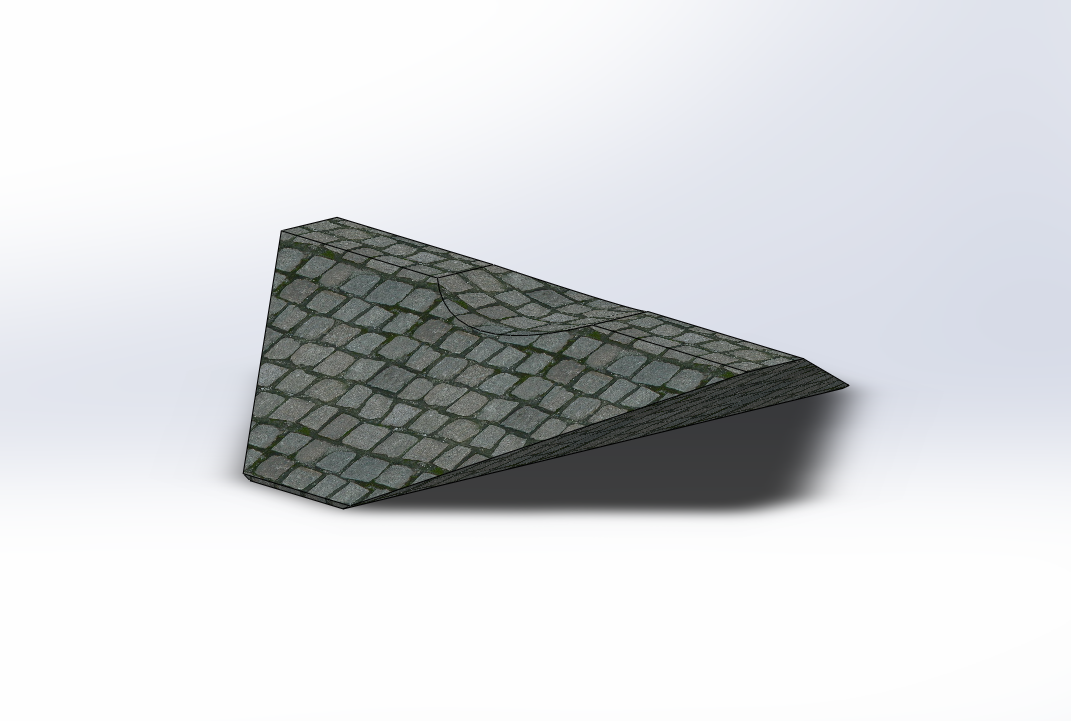
Rendering of Stone Check Dam
Next Steps
Further testing is needed to test infiltration of the soil and determine soil types. Infiltration rate will determine if additional design elements need to be implemented. Moving forward, calculations will have to be reviewed by a professional engineer to ensure that they are accurate. Further, all calculations will be compiled and archived to allow future teams to utilize the current designs. Additional farmer input also needs to be included to ensure that the final design is exactly what is wanted and needed by the community. Our hope is that with this information, the next team will be able to travel to Entusi to conduct the testing we were planning on doing, as well as any other necessary testing and complete one final design to be built at Entusi.
Meet the Team
Carlos Diaz
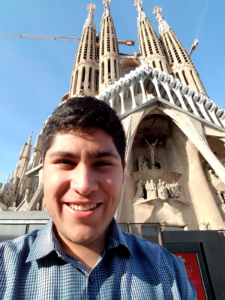 My name is Carlos Diaz and I’m a senior in Electrical Engineering. Aside from being a full time student I am involved in Mines Catholic ministry, the Institute of Electronic and Electrical Engineers, and the Society of Hispanic Engineers on campus. I also enjoy hiking, gardening, traveling, and hammocking when I have the time. After graduation, I will work for Black and Veath in their power delivery sector as a Power Systems Engineer.
My name is Carlos Diaz and I’m a senior in Electrical Engineering. Aside from being a full time student I am involved in Mines Catholic ministry, the Institute of Electronic and Electrical Engineers, and the Society of Hispanic Engineers on campus. I also enjoy hiking, gardening, traveling, and hammocking when I have the time. After graduation, I will work for Black and Veath in their power delivery sector as a Power Systems Engineer.
Emily Jones
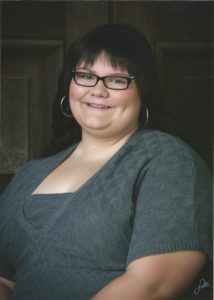 My name is Emily Jones and I am a senior in Environmental Engineering. My goal is to gain experience in Environmental Microbiology and Site Remediation in industry, before returning to school for a Masters in Microbiology. I am involved in Society of Women Engineers and American Society of Civil Engineering at Colorado School of Mines. I enjoy paddleboarding, reading, crocheting and knitting, watching movies, and hanging out with friends and family when not studying.
My name is Emily Jones and I am a senior in Environmental Engineering. My goal is to gain experience in Environmental Microbiology and Site Remediation in industry, before returning to school for a Masters in Microbiology. I am involved in Society of Women Engineers and American Society of Civil Engineering at Colorado School of Mines. I enjoy paddleboarding, reading, crocheting and knitting, watching movies, and hanging out with friends and family when not studying.
Jacob Kohl
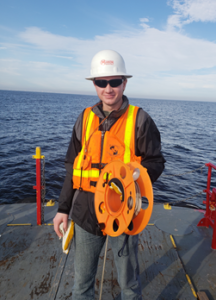 My name is Jacob Kohl and I am a senior in Civil Engineering. In addition to academics, I work for the Mines Athletics Department and lead the Navigators ministry on campus. Upon graduation, I will work for Manson Construction as a field engineer in the fields of dredging and marine construction. I enjoy basketball, hiking, camping, and spending time with friends and family.
My name is Jacob Kohl and I am a senior in Civil Engineering. In addition to academics, I work for the Mines Athletics Department and lead the Navigators ministry on campus. Upon graduation, I will work for Manson Construction as a field engineer in the fields of dredging and marine construction. I enjoy basketball, hiking, camping, and spending time with friends and family.
Elena Lundeen
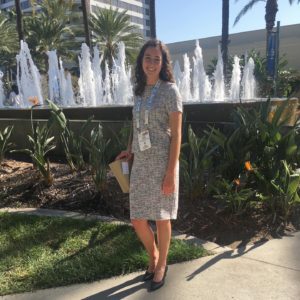 Hi, my name is Elena and I am a senior in Civil Engineering focusing on environmental and water resources. I am also involved on campus with the Society of Women Engineers, American Society of Civil Engineers, Kappa Alpha Theta, and Christian Challenge. In my spare time I enjoy baking, hiking, and watching too many Netflix shows at once.
Hi, my name is Elena and I am a senior in Civil Engineering focusing on environmental and water resources. I am also involved on campus with the Society of Women Engineers, American Society of Civil Engineers, Kappa Alpha Theta, and Christian Challenge. In my spare time I enjoy baking, hiking, and watching too many Netflix shows at once.
Anli Ni
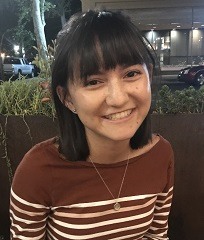 My name is Anli and I am a senior in Civil Engineering. My goal is to work as a structural engineer after graduation. Outside of school I enjoy doing just about anything outdoors, especially hiking, skiing, and climbing.
My name is Anli and I am a senior in Civil Engineering. My goal is to work as a structural engineer after graduation. Outside of school I enjoy doing just about anything outdoors, especially hiking, skiing, and climbing.
Brenna Treanor
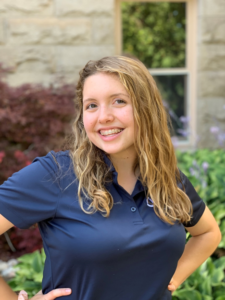 Hi, I’m Brenna Treanor! I’m a senior in Civil Engineering. In addition to my studies, I work as a Community Director for Morgan & Thomas Residence Halls on campus. When I’m not working or studying, I enjoy volunteering with kids at the MSV Home, enjoying the outdoors, and spending time with my friends and loved ones. Next year, I will continue working for Residence Life as the Community Director for Mines Park, and working towards a Master’s in Hydrologic Science and Engineering.
Hi, I’m Brenna Treanor! I’m a senior in Civil Engineering. In addition to my studies, I work as a Community Director for Morgan & Thomas Residence Halls on campus. When I’m not working or studying, I enjoy volunteering with kids at the MSV Home, enjoying the outdoors, and spending time with my friends and loved ones. Next year, I will continue working for Residence Life as the Community Director for Mines Park, and working towards a Master’s in Hydrologic Science and Engineering.
